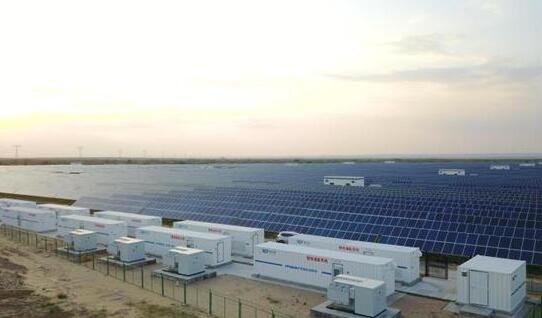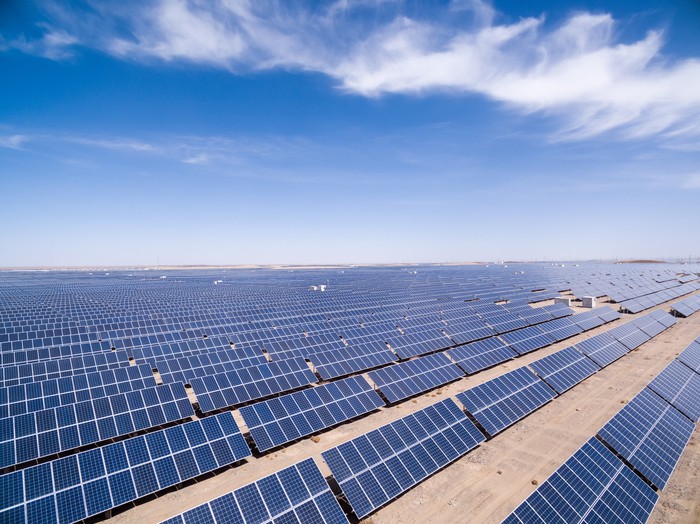the world largest energy storage project 1300 MWh, Huawei Successfully Signed storage facility which will power The Red Sea Project with clean energy 24/7
Huawei officially announced that it has successfully signed the world largest energy storage project so far, the Saudi Red Sea New City Energy Storage Project, with a scale of 1,300MWh.
For Huawei, winning the world largest energy storage project means that the continued layout of the energy storage track has finally achieved a substantial breakthrough.
Huawei, which is fully engaged in the field of new energy, finally achieved substantial results, Summit held in Dubai a few days ago, Huawei Digital Energy Technology Co., Ltd. and Shandong Power Construction Engineering Co., Ltd. successfully signed the Saudi Red Sea New City energy storage project.
According to Huawei, the energy storage scale of the Red Sea New City Energy Storage Project in Saudi Arabia has reached 1300 MWh. It is by far the world’s largest energy storage project and the world’s largest off-grid energy storage project. In the future, the entire city’s electricity will come entirely from new energy sources.
It has strategic significance and a benchmarking demonstration effect for the development of the global energy storage industry.
Huawei stated that the Red Sea New City energy storage project is a key project included in Saudi Arabia “Vision 2030” plan. The developer is ACWA Power and the EPC contractor is Shandong Power Construction No. 3 Company.
According to Tianyan Check data, Huawei Digital Energy Technology Co., Ltd. was established on June 7, 2021. The legal representative is Hu Houkun with a registered capital of RMB 3 billion. The company is wholly-owned by Huawei Technologies Co., Ltd.
For Huawei, winning this big project is of great significance, and the continued layout of the energy storage track has finally achieved a substantial breakthrough. Prior to this, Huawei has accumulated more than 10 years of energy storage system research and development and more than 8GWh energy storage system application experience. In the second half of 2020, Huawei launched an energy storage system for households such as residents and industrial parks.
In the past September, Huawei’s large-scale ground power station energy storage solution was unveiled for the first time at the 2021 Tokyo Solar Photovoltaic Exhibition in Japan, One of the highlights is the smart string energy storage solution.
In traditional energy storage solutions for large-scale ground power stations, the difference in battery modules will lead to mismatches, resulting in battery capacity decline, rapid attenuation, difficulty in operation and maintenance, and high risks. Huawei uses the controllability of power electronic products to solve lithium The inconsistency of the battery has reduced the levelized cost of the energy storage system by 20%.
In the past two years, although Huawei’s mobile phone and 5G business have been chased down, Huawei is still increasing R&D investment against the trend, striving to expand new businesses, and looking for new growth points. The new energy track is one of the strategic offensive directions. First, it has continuously entered the subdivisions of new energy vehicles , photovoltaics and energy storage.
Saudi Arabia return on the new energy track?
The market expects that this order from Huawei may once again ignite the A-share energy storage track. In fact, the disk on October 18 showed that the new energy track was once again targeted by funds. The leading Ningde era rose sharply yesterday, and the total market value climbed to 1,385.8 billion yuan.
CATL is not only the leader of power batteries, but also the leader of energy storage circuits. As early as 2018, CATL established a separate energy storage division and began to promote the energy storage business on the fast lane.
Afterwards, CATL took the lead on the energy storage track, from investing heavily in energy storage research and development, to cooperating with State Grid, Kstar, Yishite, Yongfu Co., Ltd., etc., to comprehensively deploy energy storage upstream and downstream.
According to CNESA statistics, among China new electrochemical energy storage projects put into operation in 2020, CATL ranks first in terms of installed capacity.

According to data, as of now, the number of A-share stocks involved in the concept of energy storage has reached 150, with a total market value of 5.97 trillion yuan. Among them, Narada Power, Ganfeng Battery, BYD, and Guoxuan Hi-Tech are all ranked in the scale. Top ten. In addition, photovoltaic leaders such as Longji and JA Solar have also begun to deploy energy storage.
For a period of time in the future, the development space of the domestic energy storage industry is still huge. According to data from the “Energy Storage Industry Research White Paper 2021”, as of the end of 2020, the cumulative installed capacity of China’s operational energy storage projects was 35.6 GW, excluding the cumulative installed capacity of pumped storage, 31.79 GW, and other new energy storage installed capacity of 3.9 GW, of which The cumulative installed capacity of lithium-ion batteries is the largest at 2902. 4MW.
Compared with overseas markets, the installed capacity of China’s new energy storage is still at a low level. According to BNEF data, the cumulative installed capacity of global electrochemical energy storage will be 16.9GW in 2020, and the cumulative installed capacity of overseas markets will reach 83%.
Among them, the United States, Europe, Japan, South Korea, and Australia are the main overseas installed countries or regions, occupying a total of The cumulative overseas installed capacity is 94%.
According to incomplete statistics, in the first half of 2021, the scale of new domestic new energy storage installed capacity exceeded 10GW, a year-on-year increase of over 600%. And the number of projects with larger installed capacity reached 34, 8.5 times that of last year, covering 12 provinces across the country.
Energy storage-a key battle for carbon neutrality
The so-called energy storage mainly refers to the storage of electrical energy. Energy storage equipment can also be understood as a large-scale power bank. At present, energy storage technologies generally include pumped water energy storage, electrochemical energy storage, thermal energy storage, hydrogen energy storage, and so on.
Among them, pumped storage is the earliest and largest energy storage technology. As of 2019, the installed capacity of pumped storage accounts for as high as 93.4%. However, the limitations of pumped storage are very obvious. It needs to be built in areas with abundant water resources and large gaps. After years of development, pumped storage has limited future growth space and cannot meet the needs of the carbon-neutral era.
In this situation, electrochemical energy storage is receiving attention. Because of its flexible installation, short construction period, and wider application range, it has become the most promising energy storage technology. The global installed capacity has increased from 1 in 2017. 7% has risen to 7.4% in 2020, and there is still huge room for growth in the future.
Currently, among electrochemical energy storage technologies, lithium batteries have the most potential for energy storage. Since 2013, the installed capacity of lithium batteries has always accounted for the largest proportion of electrochemical installed capacity and has been increasing.
As of 2019, the world’s cumulative installed capacity of lithium-ion batteries accounted for 87.3% of electrochemical energy storage, and the high probability of future growth in the electrochemical energy storage field is still dominated by lithium batteries.

Another key factor in the rise of lithium battery energy storage is the rapid decline in costs. According to BloombergNEF, from 2010 to 2020, the average price of global lithium-ion battery packs has dropped from US$1,100/kWh to US$137/kWh, a decrease of 89%. In the past ten years, the entire energy storage from the perspective of equipment, The cost of energy storage systems has dropped by 75%.
In addition, a trillion-level track is inseparable from the dividends of the times. The dividend of the era of the energy storage industry is naturally “carbon neutral.” On September 22, 2020, China officially announced to the world that it will strive to achieve the peak of carbon emissions by 2030 and achieve carbon neutrality by 2060.
Since then, China’s energy storage industry has ushered in a bright moment. As we all know, the main way to achieve the ultimate goal of carbon neutrality is to develop renewable energy sources such as photovoltaics and wind power to replace fossil energy. Photovoltaic and wind power are typical intermittent energy sources and must rely on energy storage. When photovoltaic and wind energy are sufficient, electrical energy is stored and the stored electricity is released when needed.
Subsequently, the energy storage industry ushered in a series of policy dividends.
The “Energy Storage Opinion Draft” clarifies the development goals of energy storage. By 2025, the transformation of new energy storage from the initial stage of commercialization to large-scale development will be realized. The market environment and business model are basically mature, and the installed capacity will reach more than 30GW.
According to estimates, by 2030 In most areas of China, the combination of optical storage and storage can achieve parity, and the energy storage market space can reach more than 1.2 trillion yuan.
In addition, since October, policies have been introduced in many places to improve the peak-to-valley time-of-use tariff mechanism, and China power market reform will continue in the future. Institutional sources pointed out that the peak-to-valley spread arbitrage is the most extensive and most important business model of the energy storage industry.
To further increase the peak electricity price will undoubtedly play a vital role in the development of the energy storage industry.

